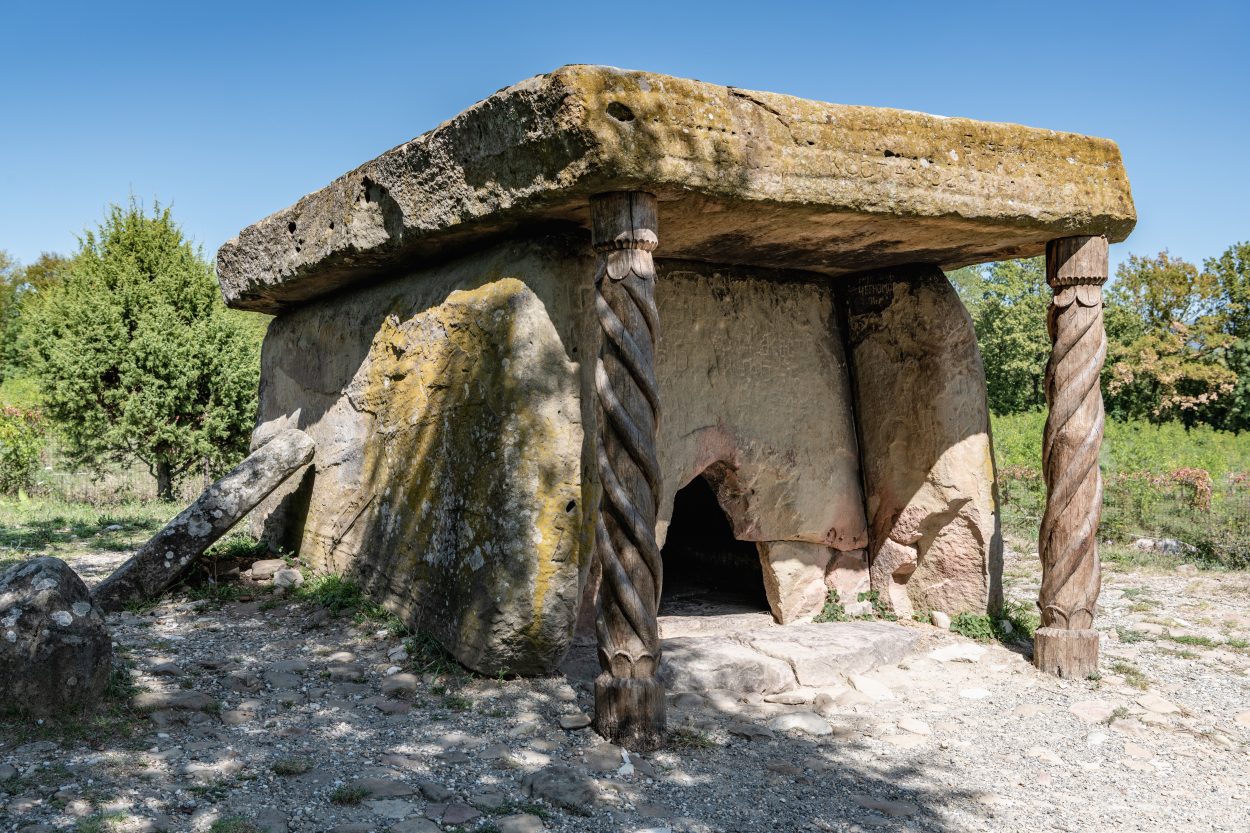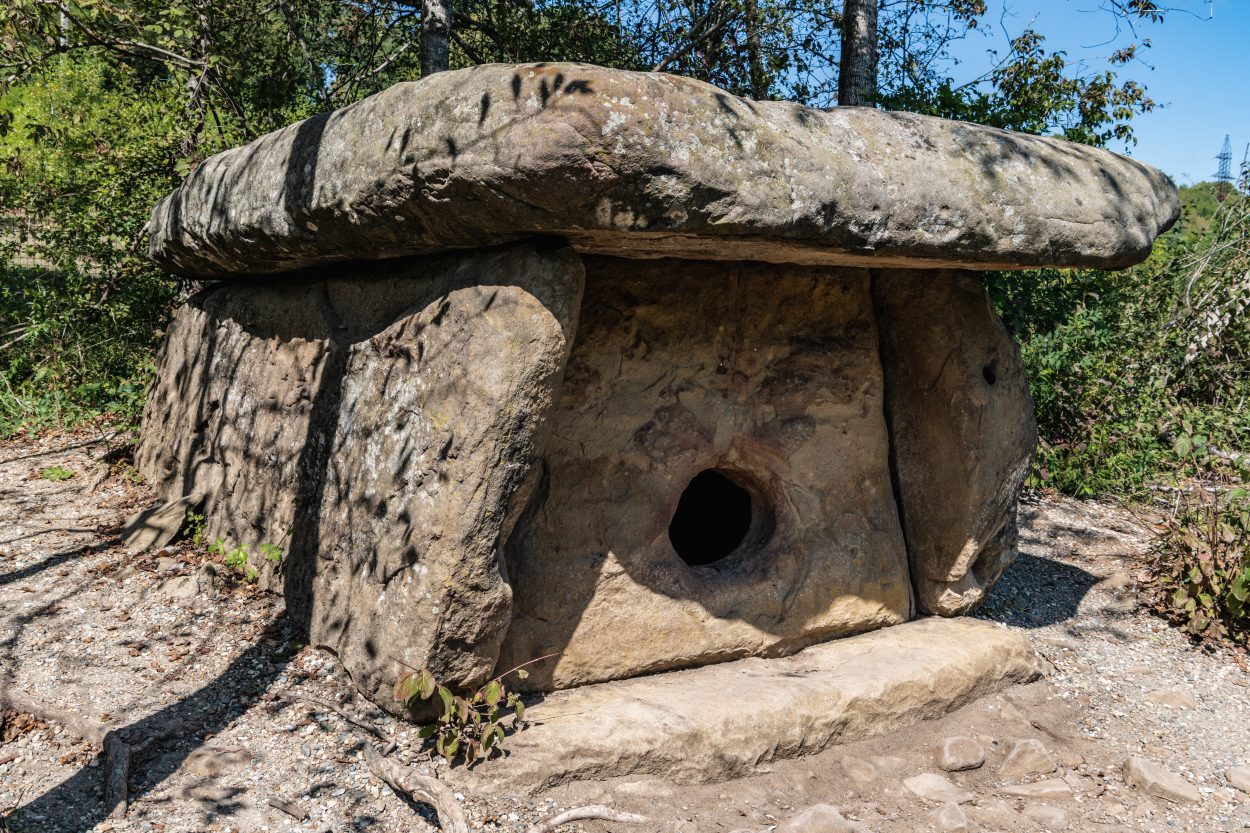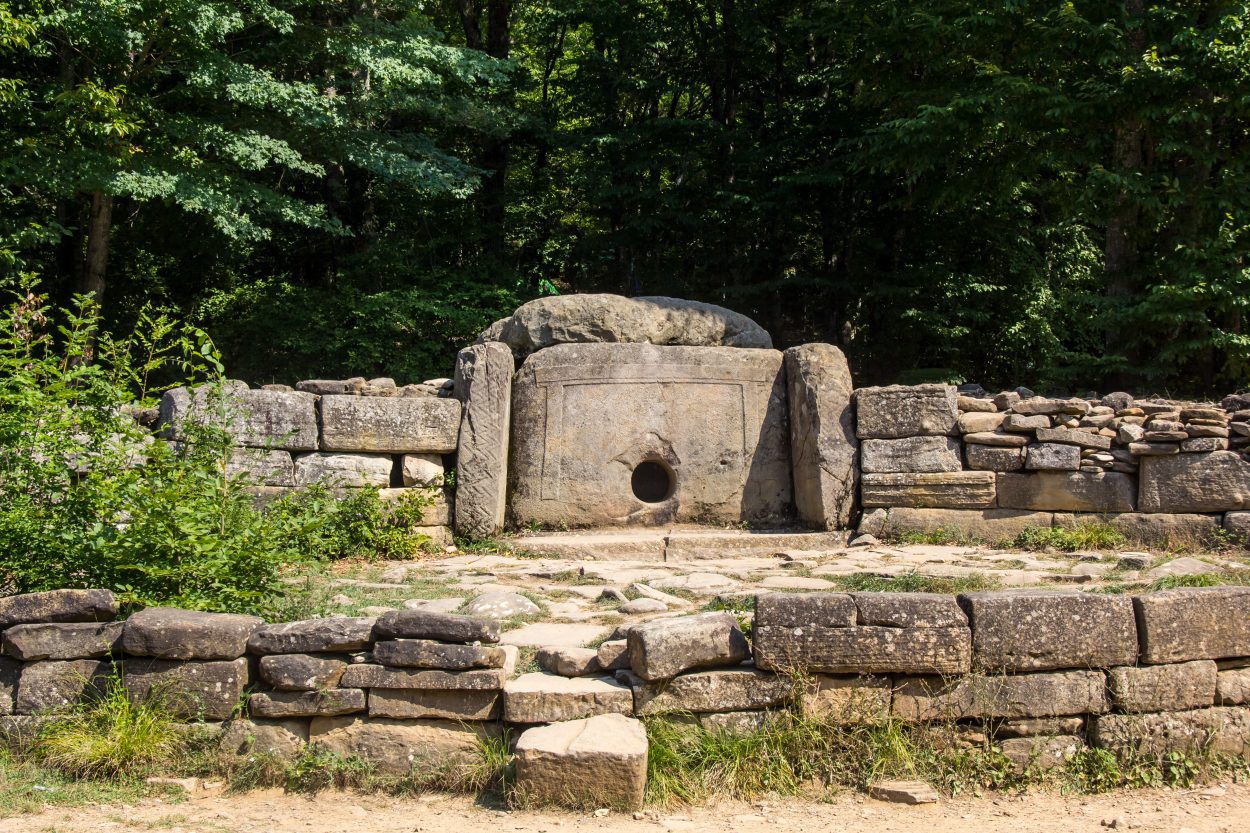In the North-West Caucasus, from Abkhazia to the Taman Peninsula, are thousands of ancient dolmens which the locals call “ispun”, meaning the “houses of dwarves”.
The megalithic structures were built during the early Bronze Age, from the middle of the 4th millennium BC to the end of the 2nd millennium BC.
Dolmen construction consisted of a chamber built from several precisely dressed connected stone blocks, or were caved in a rock mass. A large roof slab covered the chamber, whilst an access portal was formed by projecting blocks from the side walls and the overhanging roof slab.
Most dolmens are punctuated with either a square, semi-circular, or oval access porthole in the centre of the façade, and can be specified into four basic types: slab, built-up, semi-monolithic and monolithic, with a typical floor plan that is square, trapezoidal, rectangular, and round.

Some dolmens have raised patterns (petroglyphs) on the face slabs, such as vertical and horizontal zigzags, hanging triangles, concentric circles, and some depicting pairs of breasts.
A petrographic analysis of the dolmen rock suggests that the builders mainly used Fluidogenic rock masses as their main construction material, that was likely hand-carried from a quarry outcrop hundreds of metres away to the dolmen construction site.

Approximately 3,000 dolmens have been identified in the Western Caucasus, and were mainly used for human burial (although some researchers suggest that the burials constitute a secondary use, with the monuments functioning as sites of tribal worship), where evidence suggests a continuous use of collective and successive burials which vary from 1-2 individuals, up to around 80 burials placed in the dolmen through the aperture in its stone front.
The material culture found in some Dolmen sites have similarities with the Maikop (Majkop) culture, a major Bronze Age archaeological culture in the western Caucasus region.

However, there is a distinctive group of pottery in sites such as Novosvobodnaya in the Maykopsky District of Russia, where the pottery stands apart from the Maikop ceramic tradition that suggests a separate variant of the Maikop culture, or even as a separate unique archaeological culture. It has also been proposed that the Dolmen builders could be associated with the Klin-Yar community in the North Caucasus, and the Koban culture from the Great Caucasus Range.
Header Image Credit : yurisuslov – Shutterstock





